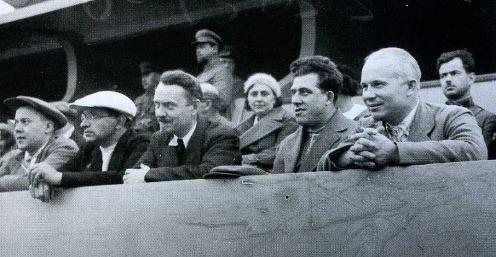Dynamo Stadium in Moscow is known and loved by several generations of football fans. Associated with him are memories of the bright pages and achievements of Soviet and Russian sports. The further fate of this historic building cannot leave indifferent either the native Muscovites or the numerous guests of the capital.
From the history of the famous stadium
Dynamo Stadium in Moscow is, of course, more than just a large stadium. This is one of the brightest architectural and historical symbols of the bygone Soviet era. And his age is quite respectable. In 2008, when he was eighty years old, the facility was closed for major reconstruction. The construction of the Dynamo stadium took place in the difficult for the Soviet country twenties. Its grand opening took place in 1928. For several decades, the stadium was the center of sports life in the Soviet Union. First of all, we are talking about football. In an era when there was no television, the whole vast country listened to sports broadcasts on the radio. The well-known voice of a football commentator opened the report with the words: "Dynamo Stadium, Moscow ...". The photo of football battles the next morning graced the front pages of sports newspapers. Frequent guests at the stadium were the country's top political leadership and the smaller Soviet nomenclature aristocracy. These figures preferred not to overlap with the general public; special lodges for them were located in the upper part of the central tribune. In 1954, when the grandiose sports complex in Luzhniki was put into operation, the Dynamo stadium lost its status as the largest in the country. But he was not deleted from an active sports life.

Architectural features
Initially, the Dynamo stadium in terms of a horseshoe opened towards the Petrovsky Park, but after the construction of the eastern rostrum in 1936, it acquired a cup-shaped shape, traditional for a football stadium. The most expressive in the architectural sense is the facade of the stadium overlooking Leningradsky Prospekt. It is solved and decorated in the best traditions of the so-called "big style" characteristic of Soviet architecture of the thirties. The harmony of the architectural ensemble of the Dynamo stadium can also be traced in the style of the Moscow metro station of the same name, the ground lobby of which is located directly in front of its facade. The stadium has changed significantly during the preparations for the 1980 Moscow Olympics. A number of auxiliary and administrative buildings, training and sports grounds appeared on its territory .
Title team
It would be unfair not to note that Dynamo Stadium is the home stadium and one of the main training facilities of the famous football team - Moscow Dynamo. This is the oldest football club in Russia since 1923. He participated in all the football championships of the USSR and has no equal in the number of various sports titles and regalia.
Reconstruction of the Dynamo stadium in Moscow
Currently, the sports arena, popular with Muscovites and guests, is a very sad sight. Graders and bulldozers are leveling the picture of the stadium familiar to several generations of football fans. It is difficult to say how substantiated are the allegations that the current technical infrastructure of the sports complex has exhausted its resource. But many experts argue that this is the case. And in order to create a new Dynamo stadium that meets the requirements of the twenty-first century, you must first clear the construction site from the wreckage of the past. Some matches of the World Cup, which is planned to be held in 2018 in Moscow, should be held here. Architecturally, the new sports complex will be an indoor stadium, where the Big and Small sports arenas, a number of administrative structures and technical services will be located under a common roof. All this would be just wonderful, and you just have to regret that in order to translate grandiose plans into reality, you have to part with the familiar architectural and historical heritage.